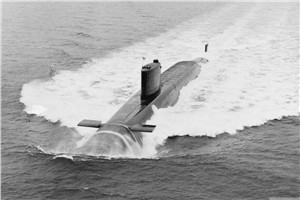Nuclear-powered Submarines Welcomed
October 15, 2021
-Former Royal Navy (RN) nuclear submarine executive officer, Captain Henry Finnis (retd), sees the benefits of Australia acquiring the vessels as he reflects on his career as a submariner.
On September 16, the Prime Minister announced a new trilateral security partnership between Australia, the United Kingdom and United States, called AUKUS.
Despite being surprised by the Australian Government’s announcement to acquire at least eight nuclear-powered submarines for the RAN, Captain Finnis welcomed the announcement.
“Nuclear-powered submarines will offer much greater flexibility, range, speed and operational capability than conventionally powered subs,” Captain Finnis said.
“Given the rapid change in Australia’s strategic circumstances over the past few years, I can understand why the Australian Government has made this decision.
“It’s probably one of the most fundamentally defining decisions made by an Australian government in my memory.”
As a young man, Captain Finnis didn’t see a future in the agricultural management degree he was studying and walked into a RN recruiting centre.
He attended Naval College at Dartmouth, South Devon, in 1968, continuing a family tradition of officers in the army or navy going back to 1804.
“That's perpetuated now with our two sons carrying on the tradition,” he said.
His sons are both officers in the RAN.
Captain Finnis streamed into submarines in the early 1970s when the RN was building its nuclear submarine fleet.
“I'd heard a fair bit about what submarines were and it appealed to my sense of adventure,” Captain Finnis said.
He served in HMS Resolution, HMS Revenge as well as a number of other British and Canadian submarines.
Initially spending 18 months as executive office on the Porpoise-class submarine HMS Walrus, Captain Finnis was executive officer of the Swiftsure-class nuclear submarine HMS Swiftsure in 1978.
The Porpoise-class submarines were the first conventional British submarines to be built after the end of World War II and HMS Swiftsure was one of six nuclear-powered submarines that remained in service until 2010.
A number of the Swiftsure-class submarines were upgraded with the capability to launch Tomahawk cruise missiles and were the first class of RN submarines to be built with the shrouded pump-jet propulsion system.
Joining the RN as a junior weapons officer, Captain Finnis worked his way through various jobs, sub-specialising in sonar and underwater weapons.
He was predominantly involved in operations during the Cold War, including the UK’s nuclear deterrent.
“When we went off on deterrent patrols it was always for real,” he said.
“It got pretty bloody interesting from time to time.”
Captain Finnis came to Australia in 1980 as part of an exchange program after completing a Principal Warfare Officer course in the UK.
He was the first RN exchange officer to be posted to a Hobart-class DDG as a Principal Warfare Officer.
“I spent just under two years on Hobart, during which time we deployed to the north-west Indian Ocean in 1981,” Captain Finnis said.
At the end of his two-year exchange in 1982, he transferred to the RAN.
Captain Finnis eventually realised his goal of commanding a ship when he was appointed Commanding Officer of HMAS Fremantle in 1984.
“It was a unique and challenging experience and certainly one of my most memorable in the RAN,” he said.
Captain Finnis retired late last year from a naval career spanning more than 50 years.
Source : MoD Australia

